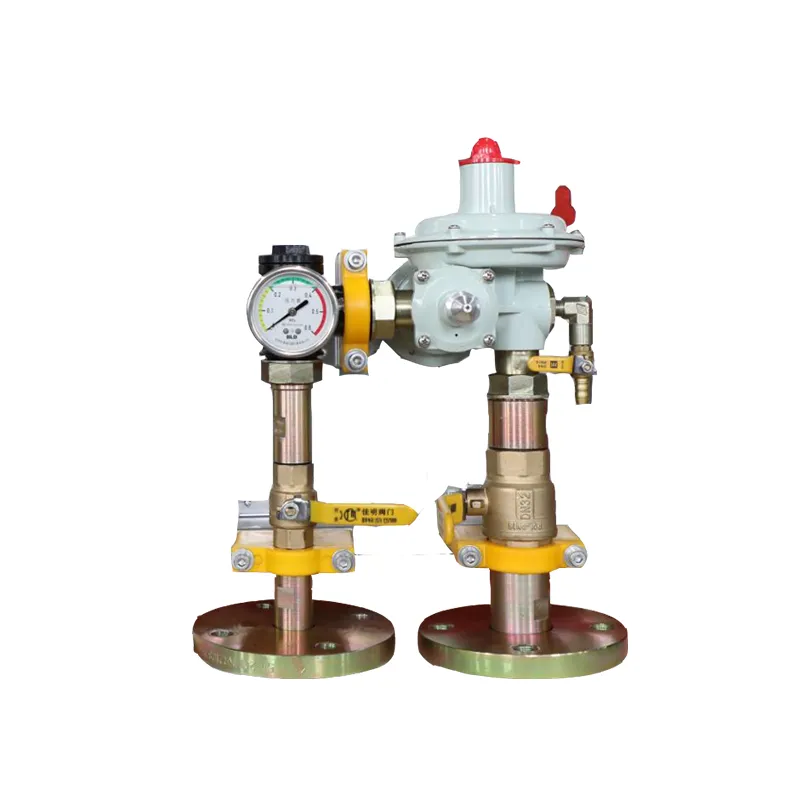
Nov . 10, 2024 13:05
Back to list
Natural Gas Pressure Reduction Equipment for Efficient Distribution
Understanding Natural Gas Pressure Reducing Stations
Natural gas is a critical energy source that fuels households, industries, and various forms of transportation. However, before it reaches consumers, the gas undergoes a series of processes that ensure its safety and efficiency. One vital component in this distribution chain is the Natural Gas Pressure Reducing Station (PRDS).
What is a Pressure Reducing Station?
A pressure reducing station is designed to lower the pressure of natural gas from high levels suitable for transmission lines down to lower levels appropriate for residential or commercial use. High-pressure gas is essential for efficient long-distance transportation as it reduces the volume and therefore the cost of transportation. However, when the gas reaches its destination, it must be at a safe and usable pressure for end users. This is where PRDS plays its essential role.
The Importance of Pressure Regulation
Natural gas is transported in pipelines at high pressures, often exceeding 500 psi (pounds per square inch). Once this gas enters urban areas or reaches distribution networks, it needs to be reduced to safe levels—typically between 5 to 60 psi—before being released into the distribution lines leading to homes and businesses.
If the gas were to enter these lines at high pressures, it could pose significant safety risks, including leaks or catastrophic failures of household appliances that are not designed to handle high-pressure gas. Hence, effective pressure regulation is crucial not only for safety but also for the efficient operation of appliances and heating systems.
Components of a Pressure Reducing Station
A typical Natural Gas Pressure Reducing Station consists of several essential components, including
.
2. Filter Systems To ensure the gas is free from impurities, filters are installed to remove any solid particles, liquids, or moisture that could damage downstream equipment or disrupt gas flow.
مخفض ضغط الغاز الطبيعي

3. Safety Valves Overpressure protection is vital for safety. Safety valves automatically shut off the flow of gas in case of excessive pressure, preventing accidents.
4. Flow Meters These devices allow for the measurement of gas volume being delivered, which is crucial for billing and monitoring purposes.
5. Control Systems Modern PRDS often include automated control systems that allow operators to remotely monitor and adjust pressure settings as necessary.
Operational Safety Measures
Safety is a top priority in the design and operation of pressure reducing stations. Regular maintenance and inspection protocols are established to ensure all components are functioning effectively and safely. Technological advancements have also introduced remote monitoring systems, allowing for real-time tracking of pressure and flow rates, which further enhances safety.
Training of personnel handling these stations is equally crucial, as they must be equipped to respond to emergencies and maintain the system effectively. Proper emergency response plans and regular drills are standard practice to prepare for possible incidents.
Environmental Considerations
As global attention increasingly focuses on sustainable energy practices, pressure reducing stations must also consider their environmental impacts. Techniques such as methane leak detection and mitigation systems are essential to reduce greenhouse gas emissions from these facilities. Implementing better materials and technologies can help minimize the ecological footprint of natural gas transmission.
Conclusion
Natural Gas Pressure Reducing Stations are integral to the safe and efficient distribution of natural gas. By reducing the high pressure of gas to safe levels for residential and commercial use, these stations play a pivotal role in ensuring a reliable energy supply. With ongoing advancements in technology and a focus on safety and environmental responsibility, the future of natural gas distribution remains promising. As we continue to rely on natural gas as a key energy source, understanding the components and importance of pressure reducing stations will become increasingly critical in our collective pursuit of safe and efficient energy practices.
Latest news
-
Safety Valve Spring-Loaded Design Overpressure ProtectionNewsJul.25,2025
-
Precision Voltage Regulator AC5 Accuracy Grade PerformanceNewsJul.25,2025
-
Natural Gas Pressure Regulating Skid Industrial Pipeline ApplicationsNewsJul.25,2025
-
Natural Gas Filter Stainless Steel Mesh Element DesignNewsJul.25,2025
-
Gas Pressure Regulator Valve Direct-Acting Spring-Loaded DesignNewsJul.25,2025
-
Decompression Equipment Multi-Stage Heat Exchange System DesignNewsJul.25,2025

